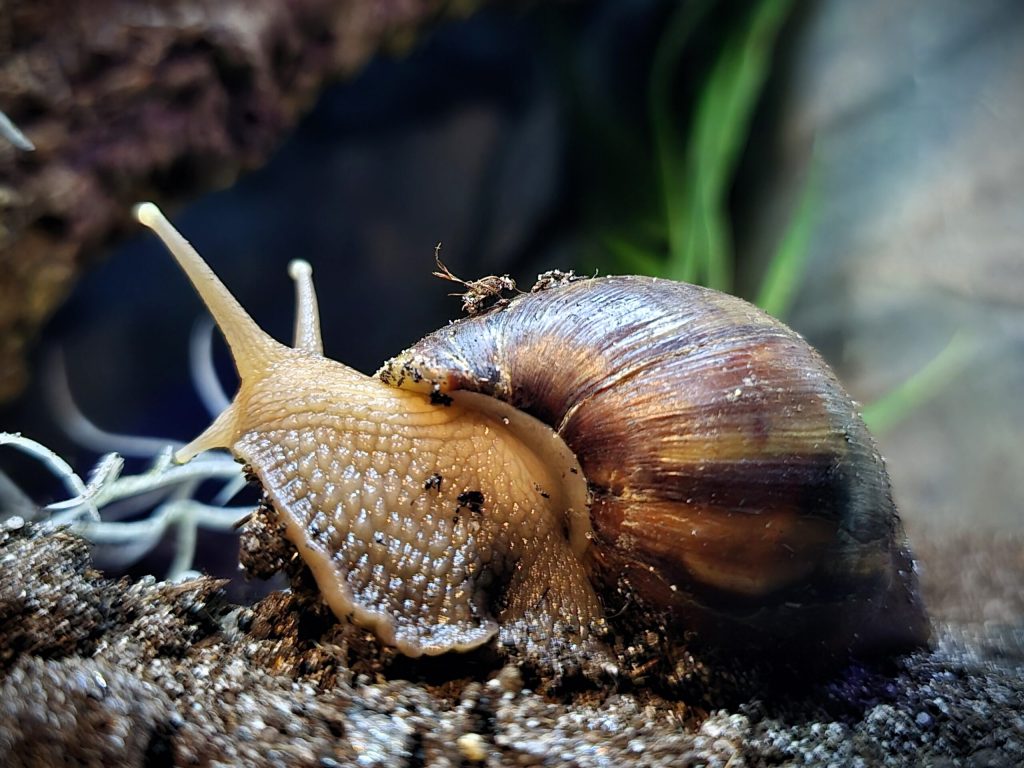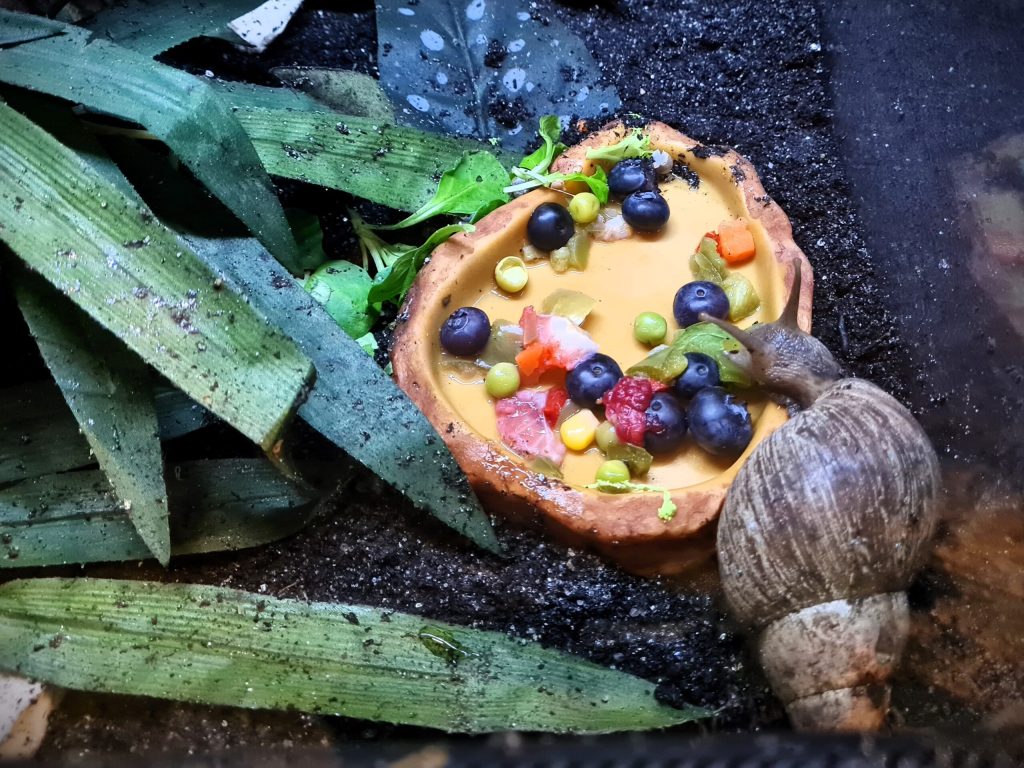GIANT AFRICAN LAND SNAILS
Alien Invaders!
What is a Giant African Land Snail?

The Giant African Land Snail (Lissachatina fulica) is one of the largest species of snail. While it originates in East Africa, mostly Kenya and Tanzania, its habitat has expanded to most of Africa, South and Southeast Asia, South America and even the South East of the USA. This is due to a variety of factors including hitchhiking on international cargo and the release of pet snails into non-native environments.
Giant African Land Snails originally lived on the edges of rainforests but have since moved to agricultural areas, coastland, natural forest, planted forests, riparian zones, scrub and shrublands, wetlands and even urban areas. The species is mostly nocturnal, preferring to hide under loose soil and leaf litter throughout the day.
What do they look like?

Giant African land snails can reach up to 20 cm in length and nearly a kilogram in weight, which makes them the largest species of land snail in the world! They use their two long tentacles on the top of the head as their eyes and are able to move them independently.

The Giant African land snail’s mouth is very special as it consists of a tongue-like structure known as a Radula, which is coated with denticles (similar to teeth) that it uses to scrape up its food!

The Giant African Land Snail uses a strong, muscular foot along the bottom of its body to move, releasing tons of mucus to help them glide along. This mucus also gives the snail much-needed protection from rough and sharp surfaces – they can even move along the edge of a sword safely!
Fussy Eaters?

Giant African Land Snails eat a great variety of foods such as plant materials, fruit, vegetables, lichens and fungi. They will even eat paper and cardboard! They will also on occasion eat stones, bones, other snails and even certain building materials such as stucco!
Boy or Girl?

Giant African Land Snails have both testes and ovaries which means each snail can produce both sperm and ova. That means all giant African land snails are hermaphroditic, meaning they are both girls and boys!
They reach maturity at an average of 5-8 months and lay about 200 eggs per clutch and 5-6 clutches per year. That is a lot of babies! Giant African Land Snails live an average of 3-5 years in the wild but typically live 5-10 years in captivity. Some specimens however have been known to live over 10 years!
Alien Invaders!

Image courtesy of Dean Stronge – https://devpolicy.org/giant-african-snails-devastating-gardens-livelihoods-solomon-islands-20170822/
Giant African Land Snails are one of the most damaging snails in the world because they consume at least 500 types of plants, including melon, cucumber and beans. This has devastating effects on local populations as vital crops needed for survival can be wiped out by the invasive snail. Giant African Land Snails can also cause destruction to local properties due to the consumption of building materials such as stucco.
The Giant African Land Snail also inadvertently caused the near extinction of the Partula Snail in Polynesia. Efforts were made to control the Invasive Giant African Land Snails on the island by introducing the carnivorous Rosy Wood Snail however, the rosy wood snail targeted the Partula Snail instead, driving the species to near extinction.
What can be done?
In some regions, an effort has been made to promote use of the Giant African Land Snail as a food resource to reduce its populations. In Taiwan, this species is used in the dish of fried snail meat, which is a delicacy among the traditional drinking snacks!
 Image courtesy of https://www.savourous.com/recipe-view/spicy-african-giant-snail-with-vegetables/
Image courtesy of https://www.savourous.com/recipe-view/spicy-african-giant-snail-with-vegetables/
Education is also crucial in reducing incidences of invasive pets, as unwanted animals are released into the wild to fend for themselves.
Other examples of Alien Invasion include the Burmese Python (largely due to illegal release of pets), Japanese Knotweed, Bighead Carp and of course the Grey Squirrel!
by Zoo & Education Officer Cath Royle
